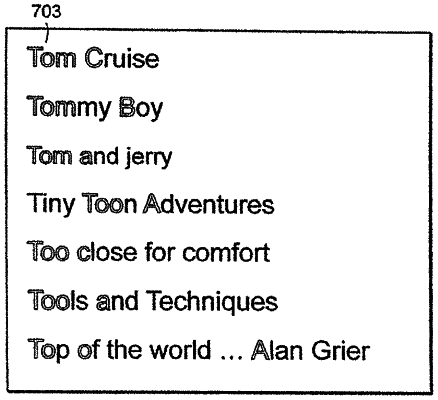| CPC G06F 3/0237 (2013.01) [G06F 16/3322 (2019.01)] | 23 Claims |

|
1. A method for disambiguating an ambiguous search input of a plurality of unresolved keystrokes, the method comprising:
receiving the ambiguous search input of the plurality of unresolved keystrokes, wherein the ambiguous search input comprises a first set of the plurality of unresolved keystrokes, a second set of the plurality of unresolved keystrokes, and a resolved word separator that separates the first set of the plurality of unresolved keystrokes and the second set of the plurality of unresolved keystrokes;
identifying a plurality of potential search queries comprising one or more words based on the ambiguous search input of the plurality of unresolved keystrokes, wherein:
the plurality of potential search queries comprise a first potential search query comprising a first word and a second word;
the first word comprises a first set of characters that correspond to the first set of the plurality of unresolved keystrokes;
the second word comprises a second set of characters that correspond to the second set of the plurality of unresolved keystrokes; and
the first potential search query corresponds to a first content item, and each of the first word and the second word of the first potential search query correspond to a same first attribute of the first content item;
the plurality of potential search queries comprise a second potential search query comprising a third word and a fourth word;
the third word comprises a third set of characters that correspond to the first set of the plurality of unresolved keystrokes;
the fourth word comprises a fourth set of characters that correspond to the second set of the plurality of unresolved keystrokes;
the second potential search query corresponds to a second content item different from the first content item; and
the third word corresponds to the first attribute of the second content item, and the fourth word corresponds to a second attribute of the second content item different from the first attribute;
in response to identifying the plurality of potential search queries:
identifying a respective content type associated with each potential search query of the plurality of potential search queries,
determining a respective relevance value for each potential search query of the plurality of potential search queries based on the respective content types; and
ranking each potential search query of the plurality of potential search queries based on the respective relevance values; and
generating for display potential search queries, organized based on the ranking of each potential search query of the plurality of potential search queries.
|